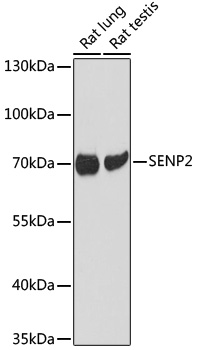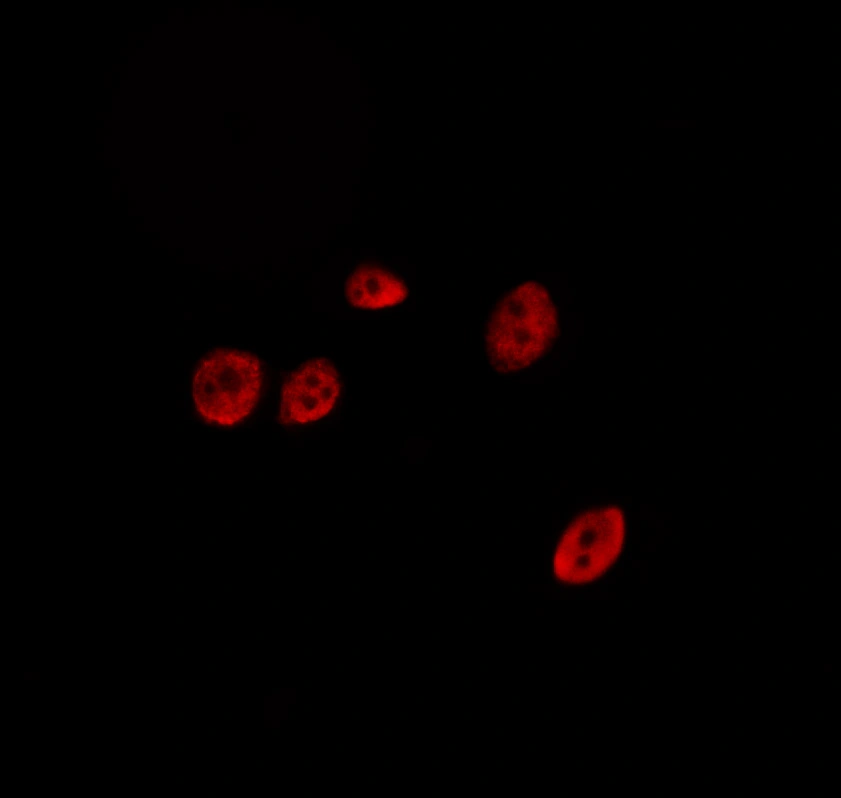SENP2 antibody [N1], N-term
GTX110504
ApplicationsImmunoFluorescence, Western Blot, ImmunoCytoChemistry, ImmunoHistoChemistry, ImmunoHistoChemistry Paraffin
Product group Antibodies
ReactivityHuman
TargetSENP2
Overview
- SupplierGeneTex
- Product NameSENP2 antibody [N1], N-term
- Delivery Days Customer9
- Application Supplier NoteWB: 1:500-1:3000. ICC/IF: 1:100-1:1000. IHC-P: 1:100-1:1000. *Optimal dilutions/concentrations should be determined by the researcher.Not tested in other applications.
- ApplicationsImmunoFluorescence, Western Blot, ImmunoCytoChemistry, ImmunoHistoChemistry, ImmunoHistoChemistry Paraffin
- CertificationResearch Use Only
- ClonalityPolyclonal
- Concentration1.79 mg/ml
- ConjugateUnconjugated
- Gene ID59343
- Target nameSENP2
- Target descriptionSUMO specific peptidase 2
- Target synonymsAXAM2, SMT3IP2, sentrin-specific protease 2, SMT3-specific isopeptidase 2, SUMO1/sentrin/SMT3 specific peptidase 2, SUMO1/sentrin/SMT3 specific protease 2, sentrin (SUMO1) specific peptidase 2, sentrin/SUMO-specific protease SENP2
- HostRabbit
- IsotypeIgG
- Protein IDQ9HC62
- Protein NameSentrin-specific protease 2
- Scientific DescriptionSUMO1 (UBL1; MIM 601912) is a small ubiquitin-like protein that can be covalently conjugated to other proteins. SENP2 is one of a group of enzymes that process newly synthesized SUMO1 into the conjugatable form and catalyze the deconjugation of SUMO1-containing species.[supplied by OMIM]
- ReactivityHuman
- Storage Instruction-20°C or -80°C,2°C to 8°C
- UNSPSC12352203
References
- Zhou L, Zheng L, Hu K, et al. SUMOylation stabilizes hSSB1 and enhances the recruitment of NBS1 to DNA damage sites. Signal Transduct Target Ther. 2020,5(1):80. doi: 10.1038/s41392-020-0172-4Read this paper
- Liang Q, Zheng Q, Zuo Y, et al. SENP2 Suppresses Necdin Expression to Promote Brown Adipocyte Differentiation. Cell Rep. 2019,28(8):2004-2011.e4. doi: 10.1016/j.celrep.2019.07.083Read this paper





